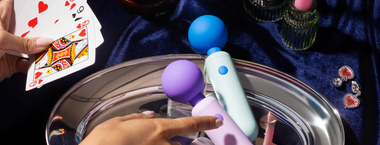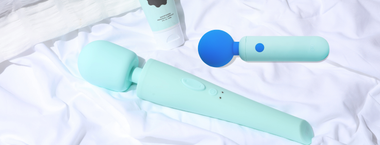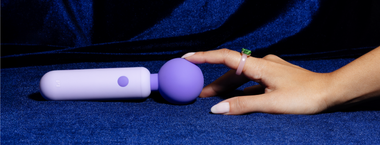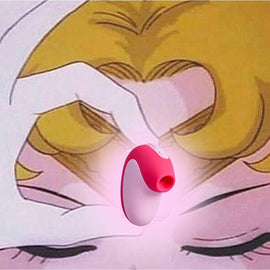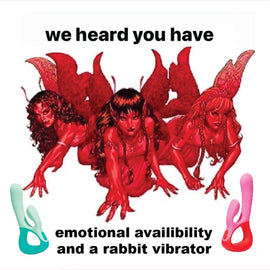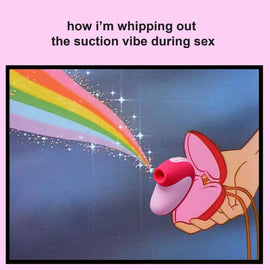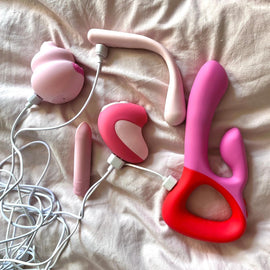What's the Difference Between a Vibrator and a Dildo?
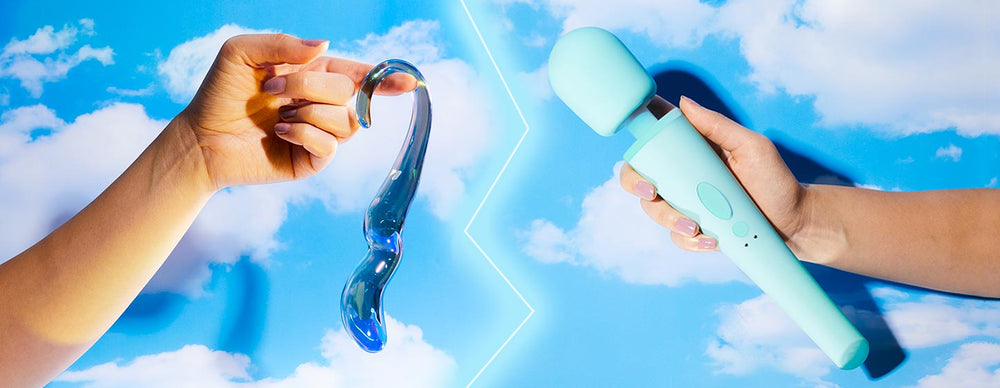
As a sex shop, one of the most common questions we’re asked is, “What is the difference between a dildo and a vibrator?”
Let’s start with their similarities: both are sex toys, both are used for masturbation, and both have been around for hundreds and even thousands of years.
However, dildos and vibrators are distinctly different both in their history and how they’re used today.

The primary difference between a vibrator and a dildo is that generally, a dildo does not vibrate unless it comes with an extension—an insertable bullet vibrator, for example. Dildos have also been around much longer than vibrations. In fact, the oldest dildo (we know of) is 28,000 years old. As it turns out, humans have been carving things into penises for a very, very long time. Vibrators, however, were first invented in 1883 by Dr. J Mortimer Granville, who invented the product as a medical instrument.
What is a dildo?
Dildos, which generally do not vibrate on their own, are most often used for sexual penetration of the vagina, anus, or mouth. However, they can be used in an array of ways—everything from general arousal to lesbian strap-on play to pegging. Dildos also can serve as both a prosthetic and/or extension.
The majority of dildos are phallic-shaped but not all are. In fact, recent trends show an incredible sense of erotic imagination, with everything from dragon dildos and horse dildos to ice cream dildos you can put in the refrigerator for temperature play. Double dildos are also popular, providing an opportunity for dual penetration either for one person or single penetration for two people.

One of the most popular Google searches is “homemade dildo,” which we wouldn’t recommend because any porous material can harbor bacteria which could lead to infection. To be specific, we wouldn’t recommend using a cucumber, banana, or hairbrush as a dildo.
The etymology or origin of the word, dilldo has historically been unclear. However, in 2018, the Oxford Dictionary claimed that the word itself is derived from popular ballads that alluded to dildos (one of the most common examples being “hey diddle diddle, the cat and the fiddle…”).

Dildos have been a part of human culture for thousands of years. Dating back to the Paleolithic era, there is evidence which shows batons were used for erotic purposes. These dildos were first made of stone, wood, ivory, and even teeth (yikes!).

Artifacts from ancient Greece feature not only dildos but also women masturbating—more progressive than even the modern standards of the New York City subway!
Today, dildos are made by an array of brands, including Unbound, Doc Johnson, Fun Factory, and Amazon dildos. It’s always important to check the materials of a dildo as some use phthalates and parabens. Try to always avoid PVC and go for medical-grade silicone instead. We highly recommend Pogo, Unbound’s medical-grade, body-safe silicone dildo for $36 which can be used as an anal dildo, vaginal dildo, or in a strapon harness with its flared base.
What is a vibrator?
Vibrators, by definition, vibrate! They were first invented in the late 1880s as a medical device. In fact, vibration technology was considered a “cure-all” for everything from headaches to weight loss. These claims would of course later be exposed as false—but at the turn of the 20th century, vibrators were culturally very mainstream and could be found in the Sears Roebuck catalog.

It wasn’t until the proliferation of film pornography from the 1920s to 1950s that vibrators became stigmatized as they showed up in pornographic videos. As such, vibrators became machines that were considered taboo as they were recognized for their primary purpose of arousing labia owners (god forbid!).
Actually, one of the most famous vibrators we know of today—The Hitachi Magic Wand—was never intended to be a vibrator. The Japanese manufacturers released it as a personal massager and womxn just happened to love using it for more than their back. While vibrators are still considered taboo by many, they’ve increasingly grown mainstream thanks in part to popular culture.
One of the most famous vibrator pop culture moments was the Sex and The City episode with the rabbit vibrator. Charlotte, who is introduced to the rabbit vibrator, becomes “addicted” and her friends stage an intervention. Please know that this is a fabricated storyline and that you cannot get addicted to your vibrator. That singular TV episode was responsible for the massive surge in rabbit vibrator purchases across the globe in the early 2000s.
Today, the vibrator market alone is $6,500,000,000 globally and growing at 13% every year. In fact, 53% of women claim to have used a vibrator.
While dildos and vibrators are different in their origins and functions, both play crucial roles in the history and future of human sexuality. Whether it was carving stones into phallic shapes or inventing high powered vibrators, most technological advancements in human society have been predicated by sex—film, VHS, and the internet—to name a few.
Unbound Vibrators and Dildos
We appreciate you taking the time to read and educate yourself on the topic of vibrators vs. dildos! The Unbound team put together the collection of vibrators and dildos below and because you’re such an excellent student, we’d like to extend the discount code “VIBEORDILDO10” for $10 off any purchase in the collection below!
Unbound Vibrators

PUFF suction vibrator for $48

FLICK wearable ring vibrator for $64 silver palladium and $68 24k gold

CLUTCH thrusting rabbit vibrator for $98

OLLIE wand vibrator for $76
SQUISH haptic touch responsive vibrator for $66
ZIP bullet vibrator for $22
BENDER flexible internal vibe for $71
SHIMMY vibrating butt plug for $62
Unbound Dildos
POGO soft silicone dildo for $37

GEMINI dual ended glass dildo for $35
STELLAR glass curved dildo for $38
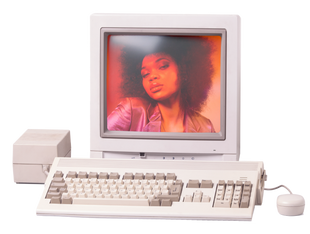
Latest Articles

A Hot and Quick Guide to BV, UTIs, and Yeast Infections
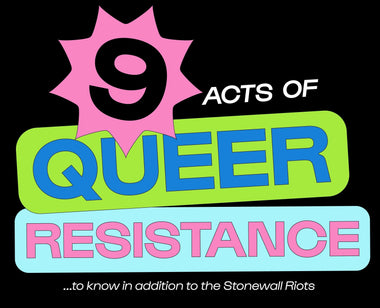
9 Acts of Queer Resistance to Know in Addition to the Stonewall Riots







